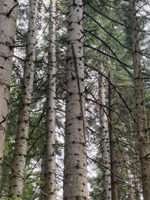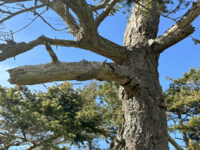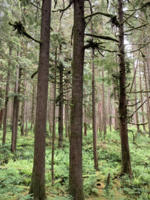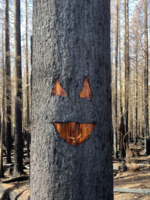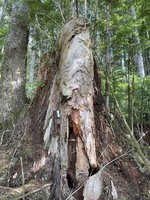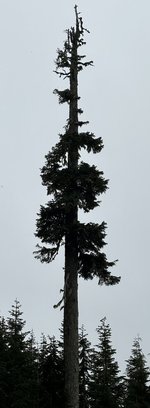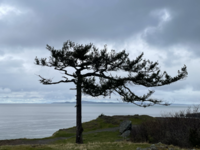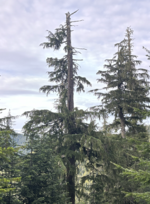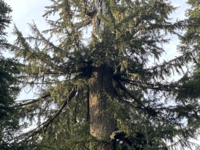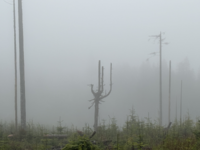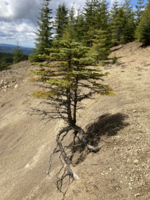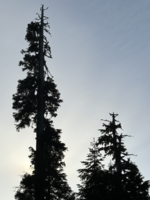Cruiser
Chumono
Pictures and observations from working in the forest.
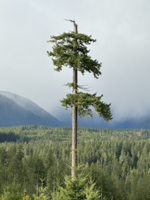
The top of a tree is a vulnerable area. Most will have their tops damaged/broken at some point.
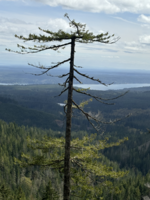
Lower branch retention and back-budding increase chances of survival when a top gets blown out.
Standing dead trees (snags) and downed-woody debris are important structural components in a mature forest.
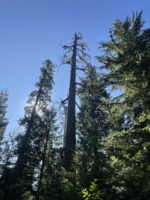
An old growth noble fir snag stands tall among its brethren. 71” diameter and 188’ tall, a giant for the species.
Its death is representative of late stage old growth stand development, Pioneer Cohort Loss.
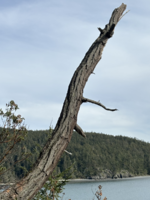
Douglas-fir along the coast of Bowman Bay, Deception Pass. Hostile growing conditions and time ensure that no two trees look the same.
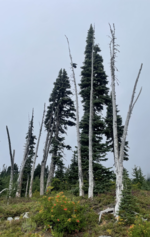
Alpine fir take a rigid, upright approach to life and maintain it into death.
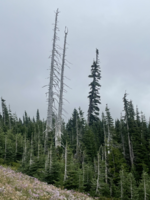
A tall fir marches on in view of its ghostly comrades. Younger generations huddle below.
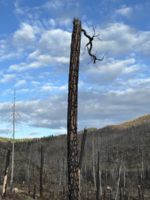
Ponderosa pine. Thick bark may protect a tree from fires below but sometimes flames come from above.
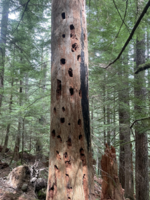
A rotting snag, once a large fir that died in the Yacolt Burn of 1902.
Beetles, woodpeckers, and other wildlife have made use of it for over a century.
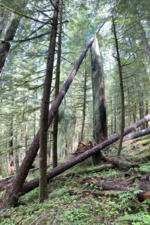
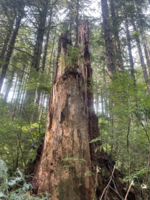
Rotting stumps and logs provide scaffolding for seedlings to grow on.
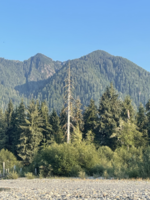
Sitka spruce. Standing dead, tall, and proud.
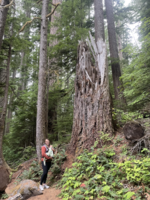
A tremendous amount of force is needed to break such a large trunk. Years of fungal decay pave the way for such a thing to occur.
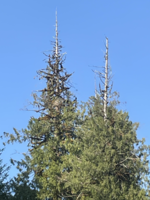
Beginning stage of the famed candelabra tops in red cedar. Additional leaders will need to grow and then die to create the candelabra.
In most other trees dead tops get blown out/rot long before new leaders have time to go through the process, but cedar wood is persistent.
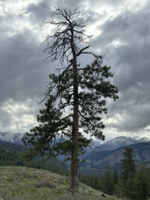
Dead top ponderosa. Cascades in the distance.
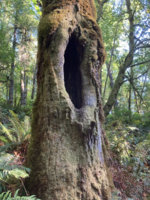
A troll probably lives in this maple cavity.

The top of a tree is a vulnerable area. Most will have their tops damaged/broken at some point.

Lower branch retention and back-budding increase chances of survival when a top gets blown out.
Standing dead trees (snags) and downed-woody debris are important structural components in a mature forest.

An old growth noble fir snag stands tall among its brethren. 71” diameter and 188’ tall, a giant for the species.
Its death is representative of late stage old growth stand development, Pioneer Cohort Loss.

Douglas-fir along the coast of Bowman Bay, Deception Pass. Hostile growing conditions and time ensure that no two trees look the same.

Alpine fir take a rigid, upright approach to life and maintain it into death.

A tall fir marches on in view of its ghostly comrades. Younger generations huddle below.

Ponderosa pine. Thick bark may protect a tree from fires below but sometimes flames come from above.

A rotting snag, once a large fir that died in the Yacolt Burn of 1902.
Beetles, woodpeckers, and other wildlife have made use of it for over a century.


Rotting stumps and logs provide scaffolding for seedlings to grow on.

Sitka spruce. Standing dead, tall, and proud.

A tremendous amount of force is needed to break such a large trunk. Years of fungal decay pave the way for such a thing to occur.

Beginning stage of the famed candelabra tops in red cedar. Additional leaders will need to grow and then die to create the candelabra.
In most other trees dead tops get blown out/rot long before new leaders have time to go through the process, but cedar wood is persistent.

Dead top ponderosa. Cascades in the distance.

A troll probably lives in this maple cavity.













